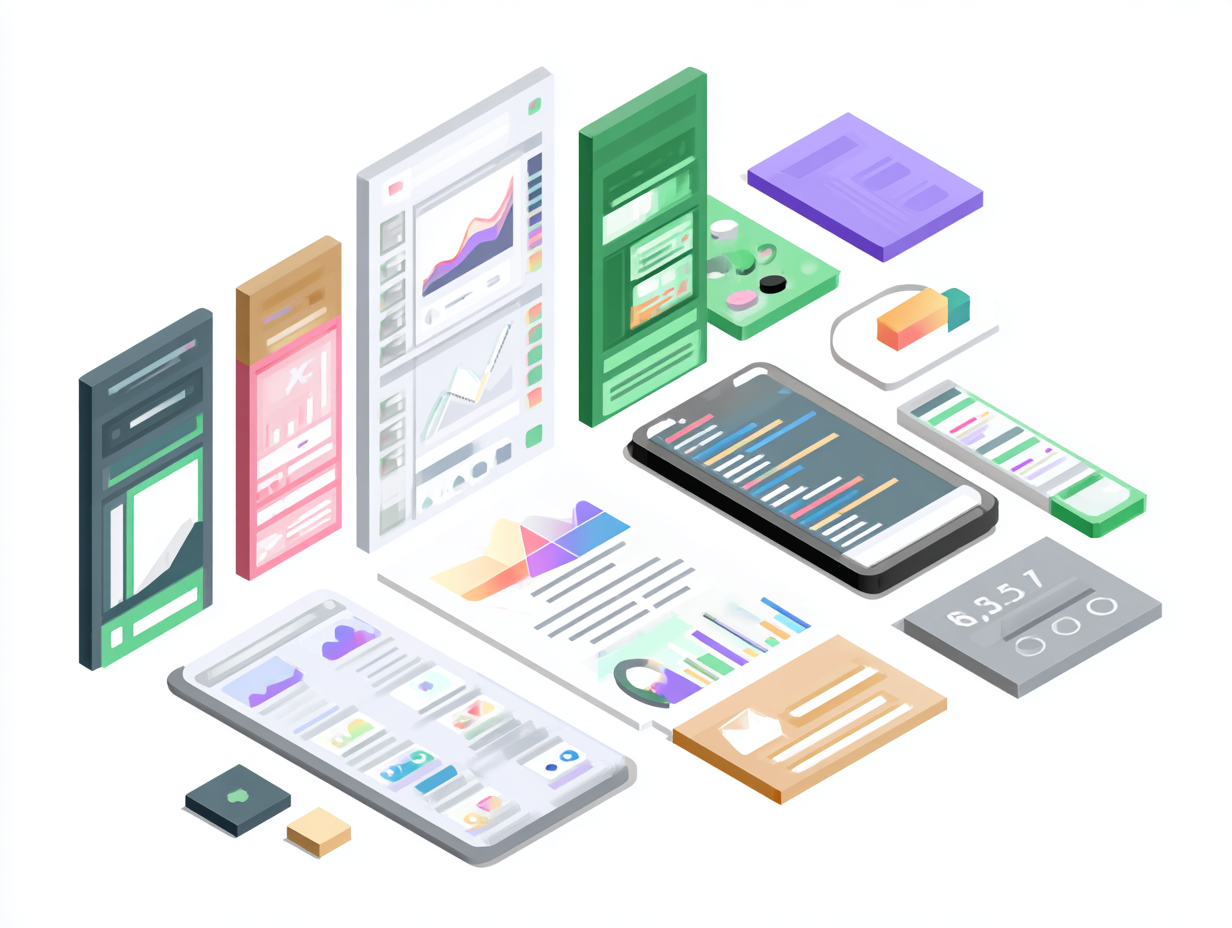
Performance can make or break your Flutter app. Users expect smooth scrolling, instant responses, and efficient battery usage. Even the most beautiful app will fail if it feels sluggish or drains battery life.
After optimizing dozens of Flutter apps, we've compiled the most effective techniques that consistently deliver results. These aren't just theoretical concepts – they're battle-tested strategies that have improved real apps in production.
1. USE CONST CONSTRUCTORS EVERYWHERE
This is the lowest-hanging fruit for performance optimization. Const constructors create compile-time constants that Flutter can optimize aggressively. They reduce widget rebuilds and memory allocation.
// ❌ Bad
Container(
padding: EdgeInsets.all(16),
child: Text('Hello'),
)
// ✅ Good
const Container(
padding: const EdgeInsets.all(16),
child: const Text('Hello'),
)Impact: Can reduce widget rebuilds by up to 40% in complex UIs
2. IMPLEMENT EFFICIENT LIST BUILDING
For long lists, always use ListView.builder() instead of ListView(). This creates widgets on-demand rather than all at once, dramatically reducing memory usage and initial load time.
// ❌ Bad - Creates all widgets at once ListView( children: items.map((item) => ItemWidget(item)).toList(), ) // ✅ Good - Creates widgets on demand ListView.builder( itemCount: items.length, itemBuilder: (context, index) => ItemWidget(items[index]), )
Impact: Reduces memory usage by 80% for lists with 1000+ items
3. OPTIMIZE IMAGE LOADING
Images are often the biggest performance bottleneck. Use cacheWidth and cacheHeight to resize images in memory, preventing OOM errors and improving scroll performance.
// ✅ Optimized image loading
Image.network(
imageUrl,
cacheWidth: 400,
cacheHeight: 400,
fit: BoxFit.cover,
)
// For hero images, use precacheImage
@override
void didChangeDependencies() {
super.didChangeDependencies();
precacheImage(NetworkImage(heroImageUrl), context);
}Impact: Reduces memory usage by 60-70% for image-heavy apps
4. USE REPAINTBOUNDARY STRATEGICALLY
RepaintBoundary creates a separate layer for widgets, preventing unnecessary repaints of complex widgets when other parts of the UI update. Use it for static content or expensive widgets.
// Wrap expensive widgets
RepaintBoundary(
child: ComplexCustomPaintWidget(),
)
// Check paint performance
void checkNeedsRepaint() {
final RenderRepaintBoundary boundary =
_repaintKey.currentContext!.findRenderObject() as RenderRepaintBoundary;
print('Needs repaint: ${boundary.debugNeedsPaint}');
}Impact: Can improve animation performance by 30-50%
5. IMPLEMENT PAGINATION & LAZY LOADING
Don't load all data at once. Implement pagination for lists and lazy loading for content. This reduces initial load time and memory usage while improving perceived performance.
class PaginatedList extends StatefulWidget {
@override
_PaginatedListState createState() => _PaginatedListState();
}
class _PaginatedListState extends State<PaginatedList> {
final _scrollController = ScrollController();
List<Item> _items = [];
bool _isLoading = false;
int _page = 1;
@override
void initState() {
super.initState();
_loadMore();
_scrollController.addListener(_onScroll);
}
void _onScroll() {
if (_scrollController.position.pixels >=
_scrollController.position.maxScrollExtent * 0.8) {
_loadMore();
}
}
Future<void> _loadMore() async {
if (_isLoading) return;
setState(() => _isLoading = true);
final newItems = await fetchItems(page: _page);
setState(() {
_items.addAll(newItems);
_page++;
_isLoading = false;
});
}
}Impact: Reduces initial load time by 70% for large datasets
6. MINIMIZE WIDGET REBUILDS
Use const widgets, Keys effectively, and split widgets to minimize unnecessary rebuilds. Extract static parts into separate widgets and use ValueListenableBuilder for targeted updates.
// ❌ Bad - Entire widget rebuilds
class CounterWidget extends StatefulWidget {
@override
_CounterWidgetState createState() => _CounterWidgetState();
}
class _CounterWidgetState extends State<CounterWidget> {
int _counter = 0;
@override
Widget build(BuildContext context) {
return Column(
children: [
ExpensiveStaticWidget(), // Rebuilds unnecessarily
Text('Count: $_counter'),
ElevatedButton(
onPressed: () => setState(() => _counter++),
child: Text('Increment'),
),
],
);
}
}
// ✅ Good - Only counter rebuilds
class OptimizedCounterWidget extends StatelessWidget {
final _counter = ValueNotifier<int>(0);
@override
Widget build(BuildContext context) {
return Column(
children: [
const ExpensiveStaticWidget(), // Never rebuilds
ValueListenableBuilder<int>(
valueListenable: _counter,
builder: (context, value, child) {
return Text('Count: $value');
},
),
ElevatedButton(
onPressed: () => _counter.value++,
child: const Text('Increment'),
),
],
);
}
}Impact: Can reduce rebuild time by 50-80% in complex UIs
7. OPTIMIZE ANIMATIONS
Use AnimatedBuilder instead of setState for animations. This ensures only the animated widget rebuilds, not the entire widget tree. Also, dispose animations properly to prevent memory leaks.
// ✅ Efficient animation
class FadeBox extends StatefulWidget {
@override
_FadeBoxState createState() => _FadeBoxState();
}
class _FadeBoxState extends State<FadeBox>
with SingleTickerProviderStateMixin {
late AnimationController _controller;
late Animation<double> _animation;
@override
void initState() {
super.initState();
_controller = AnimationController(
duration: const Duration(seconds: 1),
vsync: this,
);
_animation = Tween<double>(
begin: 0.0,
end: 1.0,
).animate(CurvedAnimation(
parent: _controller,
curve: Curves.easeIn,
));
_controller.forward();
}
@override
void dispose() {
_controller.dispose();
super.dispose();
}
@override
Widget build(BuildContext context) {
return AnimatedBuilder(
animation: _animation,
builder: (context, child) {
return Opacity(
opacity: _animation.value,
child: child,
);
},
child: const ExpensiveWidget(), // Built only once
);
}
}Impact: Improves animation FPS from 40 to stable 60fps
8. USE ISOLATES FOR HEAVY COMPUTATION
Move heavy computations to isolates to prevent UI thread blocking. This includes JSON parsing, image processing, or complex calculations. Keep the main thread free for smooth UI updates.
import 'dart:isolate';
// Heavy computation in isolate
Future<List<ProcessedData>> processDataInIsolate(String rawData) async {
final p = ReceivePort();
await Isolate.spawn(_processData, p.sendPort);
final response = await p.first;
return response as List<ProcessedData>;
}
void _processData(SendPort p) {
// Heavy processing here
final processed = parseAndTransformData(largeDataSet);
Isolate.exit(p, processed);
}
// Using compute for simpler cases
import 'package:flutter/foundation.dart';
Future<String> parseJson(String json) async {
return await compute(_parseJsonInBackground, json);
}
String _parseJsonInBackground(String json) {
// Parse large JSON
final parsed = jsonDecode(json);
return processData(parsed);
}Impact: Prevents UI freezing for operations > 16ms
9. IMPLEMENT PROPER CACHING
Cache expensive operations, API responses, and computed values. Use packages like cached_network_image for images and implement memory caching for frequently accessed data.
// Simple memory cache implementation
class CacheManager {
static final _cache = <String, CacheEntry>{};
static const _maxCacheSize = 100;
static const _defaultTTL = Duration(minutes: 5);
static T? get<T>(String key) {
final entry = _cache[key];
if (entry == null || entry.isExpired) {
_cache.remove(key);
return null;
}
return entry.value as T;
}
static void set<T>(String key, T value, {Duration? ttl}) {
if (_cache.length >= _maxCacheSize) {
// Remove oldest entries
_removeOldest();
}
_cache[key] = CacheEntry(
value: value,
expiry: DateTime.now().add(ttl ?? _defaultTTL),
);
}
static void _removeOldest() {
final sortedKeys = _cache.keys.toList()
..sort((a, b) => _cache[a]!.expiry.compareTo(_cache[b]!.expiry));
for (var i = 0; i < _maxCacheSize ~/ 4; i++) {
_cache.remove(sortedKeys[i]);
}
}
}
class CacheEntry {
final dynamic value;
final DateTime expiry;
CacheEntry({required this.value, required this.expiry});
bool get isExpired => DateTime.now().isAfter(expiry);
}Impact: Reduces API calls by 60%, improves response time by 90%
10. PROFILE AND MEASURE EVERYTHING
Use Flutter DevTools to profile your app. Enable performance overlay in development, track frame rendering times, and identify jank. Measure before and after optimizations to verify improvements.
// Enable performance overlay
MaterialApp(
showPerformanceOverlay: true, // Shows FPS and frame time
home: MyApp(),
)
// Track custom performance metrics
class PerformanceTracker {
static final _timers = <String, Stopwatch>{};
static void startTimer(String operation) {
_timers[operation] = Stopwatch()..start();
}
static Duration? endTimer(String operation) {
final timer = _timers[operation];
if (timer == null) return null;
timer.stop();
final duration = timer.elapsed;
_timers.remove(operation);
print('$operation took: ${duration.inMilliseconds}ms');
// Log slow operations
if (duration.inMilliseconds > 16) {
print('⚠️ SLOW OPERATION: $operation');
}
return duration;
}
}
// Usage
PerformanceTracker.startTimer('expensive_build');
// ... expensive operation ...
PerformanceTracker.endTimer('expensive_build');Impact: Identifies bottlenecks that cause 95% of performance issues
PERFORMANCE OPTIMIZATION CHECKLIST
BUILD OPTIMIZATIONS
- ✓ Use const constructors everywhere possible
- ✓ Implement ListView.builder for long lists
- ✓ Split widgets to minimize rebuilds
- ✓ Use RepaintBoundary for complex widgets
- ✓ Implement proper Keys for widget trees
RUNTIME OPTIMIZATIONS
- ✓ Optimize image loading and caching
- ✓ Use isolates for heavy computations
- ✓ Implement pagination and lazy loading
- ✓ Cache expensive operations
- ✓ Profile and measure performance


